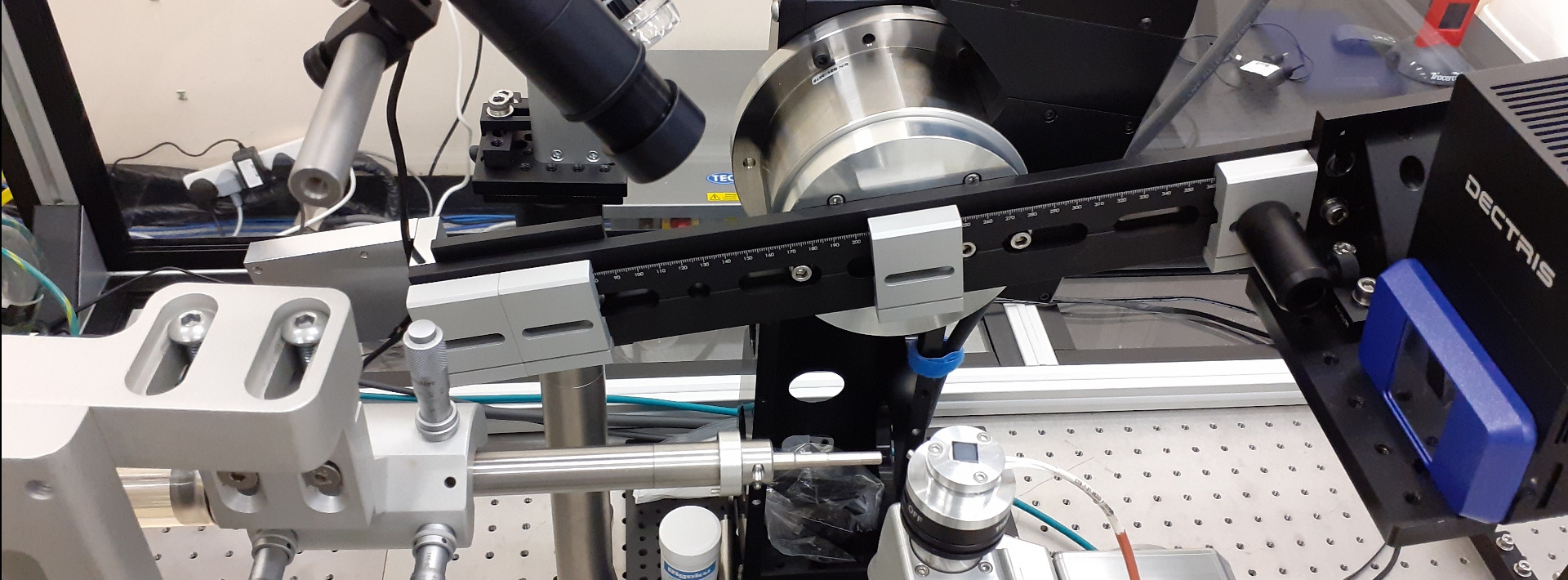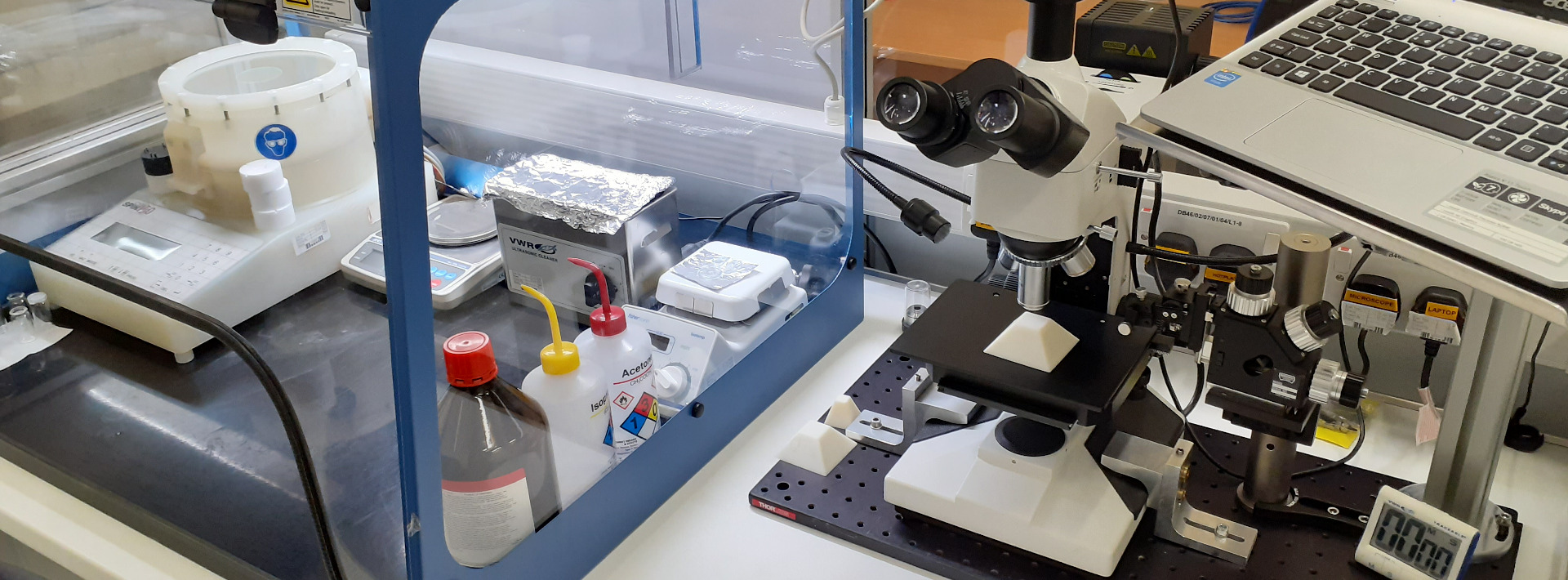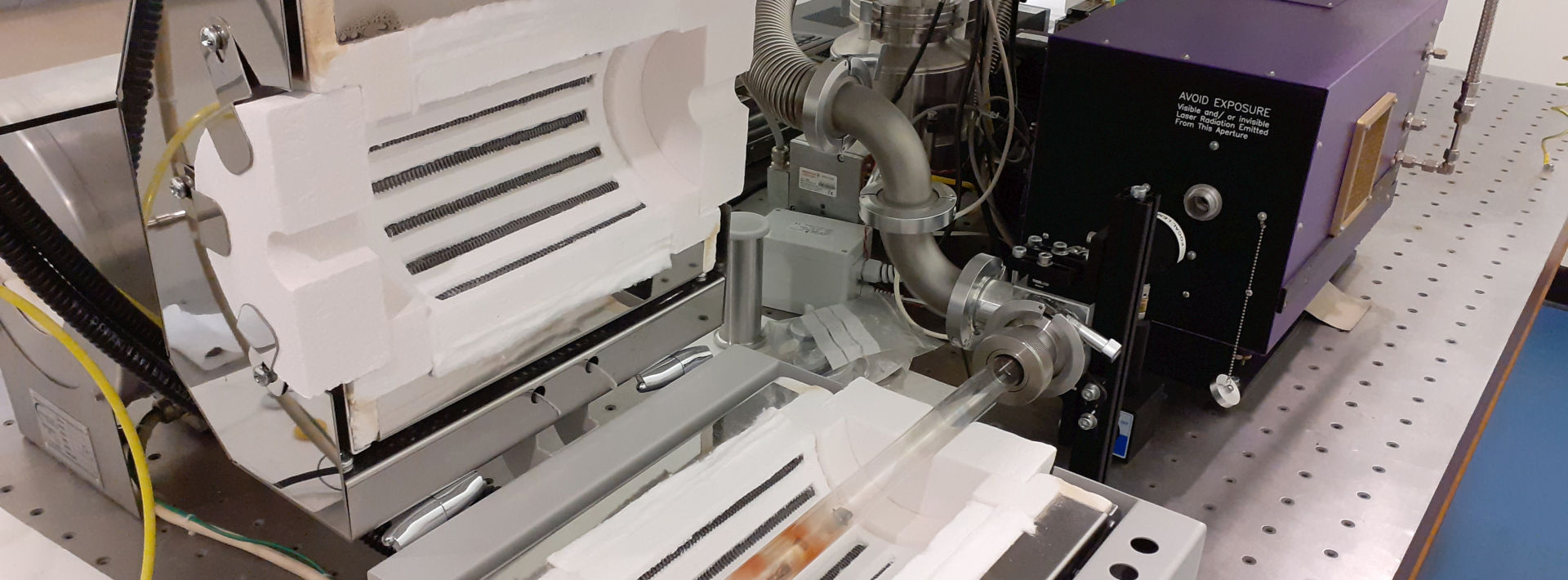Difference between revisions of "Facilities"
m |
(→X-ray Diffraction Imaging Laboratory) |
||
| (39 intermediate revisions by the same user not shown) | |||
| Line 2: | Line 2: | ||
__NOTOC__ | __NOTOC__ | ||
| + | __INDEX__ | ||
| + | <metadesc>Coherent X-ray Science Group facilities furnished by research grants awarded to Marcus Newton. </metadesc> | ||
== Facilities: == | == Facilities: == | ||
| − | |||
| − | + | === X-ray Diffraction Imaging Laboratory === | |
| − | + | <div class="res-img"> | |
| + | [[File:xrdi.jpg|center]] | ||
| + | </div> | ||
| + | The X-ray Diffraction Imaging Facility consists of a Rigaku MicroMax-007 x-ray generator capable of focusing x-rays down to a spot size of 0.075 mm in diameter. X-ray are imaged with a Dectris Eiger2 area detector that is capable of single photon counting and can operate at high frequency. A robotic diffractometer sample mounting stage permits automated and rapid measurement of multiple samples in sequence. The system is capable of performing a wide variety of X-ray diffraction measurements on bulk samples, thin films and powders. In addition, there is capacity for in-operando X-ray measurements coupled with laser, magnetic and electrical excitation. | ||
| − | === | + | === Sample Preparation Room === |
| − | [[ | + | <div class="res-img"> |
| + | [[File:cleanroom.jpg|center]] | ||
| + | </div> | ||
| − | The | + | The sample preparation room is equip with a fume cupboard that houses a spin coater, sonic bath, hot plate and weighing scale. There is also an optical microscope with micromanipulator for sample inspection and manipulation. |
| − | === | + | === Synthesis Laboratory === |
| − | + | <div class="res-img"> | |
| + | [[File:laserlab.jpg|center]] | ||
| + | </div> | ||
| − | + | The CXS Synthesis laboratory is primarily used for the synthesis of nanometre scale crystals and device structures. Pulsed laser deposition (PLD) permits the synthesis of complex transition metal-oxide materials such as vanadates, cuprates and manganites as thin films or as heterostructures. Our laboratory houses a 248 nm KrF excimer laser for pulsed laser deposition and laser-assisted fabrication. The laboratory is also equip with two thermal vacuum tube furnaces and various gases for nanoscale crystal synthesis via thermal CVD. | |
| − | + | <br clear=all> | |
| − | |||
| − | |||
| − | |||
| − | |||
| − | |||
Latest revision as of 17:34, 14 November 2024
Facilities:
X-ray Diffraction Imaging Laboratory
The X-ray Diffraction Imaging Facility consists of a Rigaku MicroMax-007 x-ray generator capable of focusing x-rays down to a spot size of 0.075 mm in diameter. X-ray are imaged with a Dectris Eiger2 area detector that is capable of single photon counting and can operate at high frequency. A robotic diffractometer sample mounting stage permits automated and rapid measurement of multiple samples in sequence. The system is capable of performing a wide variety of X-ray diffraction measurements on bulk samples, thin films and powders. In addition, there is capacity for in-operando X-ray measurements coupled with laser, magnetic and electrical excitation.
Sample Preparation Room
The sample preparation room is equip with a fume cupboard that houses a spin coater, sonic bath, hot plate and weighing scale. There is also an optical microscope with micromanipulator for sample inspection and manipulation.
Synthesis Laboratory
The CXS Synthesis laboratory is primarily used for the synthesis of nanometre scale crystals and device structures. Pulsed laser deposition (PLD) permits the synthesis of complex transition metal-oxide materials such as vanadates, cuprates and manganites as thin films or as heterostructures. Our laboratory houses a 248 nm KrF excimer laser for pulsed laser deposition and laser-assisted fabrication. The laboratory is also equip with two thermal vacuum tube furnaces and various gases for nanoscale crystal synthesis via thermal CVD.


